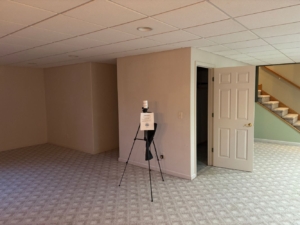What is Radon?
No matter where you are in America, your home may be exposed to dangerous radon gas. Radon is a radioactive, invisible, and odorless gas produced when uranium in the Earth’s crust decays into radium. Outdoors, radon naturally dissipates harmlessly as it rises through the crust. But in homes, it can become trapped, posing a significant health risk to you and your family.
According to the EPA, radon is one of the leading contributors to the development of lung cancer, second only to smoking. For this reason, regular radon testing is essential, whether you’re a homeowner or considering purchasing a home.
Why Are Radon Tests Important? Understanding The Benefits.
The biggest benefit of radon testing is peace of mind. Radon has no smell, taste, or color, and beyond contributing to lung cancer, radon exposure has no symptoms that can be identified by a doctor. This means a radon test is the only way to confirm your home has safe radon levels.
Radon tests can also save you money if you’re trying to sell your home. You can provide potential buyers with information about radon levels and ensure compliance with local radon codes. The EPA also recommends testing for radon when buying a home. If high levels are detected, you can request mitigation measures or use your home inspection contingency to back out of the purchase.
What Is A Radon Test, And How Does It Work?
Instead of using traditional charcoal canisters that need to be sent to a lab and take days for results, we use a Continuous Radon Monitor (CRM) for faster, more accurate readings. Our test runs for 48 hours, and results are delivered by email immediately following the test—no more waiting for lab results.
Our radon testing equipment measures environmental factors like temperature and relative humidity. In addition, it features movement sensors and GPS tracking to prevent tampering, ensuring high-quality and reliable results.
How Much Does a Radon Test Cost?
Bundled with a home inspection: $295
As a standalone service: $395

